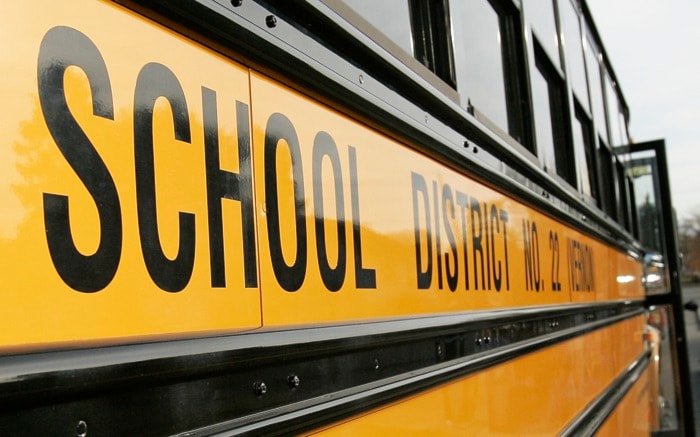The school year begins in September, but for the Vernon School District, July 1 marks the beginning of its fiscal year and so far, things are looking good.
At Wednesday’s district board meeting, secretary-treasurer Sterling Olson presented trustees with a report on financial performances and key financial risks for the year so far.
“We are pretty much right on track for this time of year, which is nice,” said Olson, before highlighting the report prepared by assistant secretary-treasurer Adrian Johnson which showed a comparison of budget versus actual expenses, for instruction, district administration, operations and maintenance, transportation and local capital.
“I think it’s really interesting the way the format for this has changed, it’s become very much like a business model,” said board chairperson Kelly Smith.
“Key financial risks: that’s the first time I’ve ever seen that listed, so everything is really, really clear.”
Under instruction salaries and benefits, the budget was for $61,863,273, and actual cost up to Oct. 31 is $12,820,883.
“It is a little difficult in some cases, so Adrian’s done a good job of putting a few little comments in but even if you look at instruction, we’ve got programs that run 10 months, and we’ve got programs that run 12 months, and then we’ve got programs that run a little in between that,” said Olson.
“If instruction was all just teachers’ salaries and benefits, and everything was equal you’d expect it to be 20 per cent of your budget gone, we’re actually at 20.72 per cent, but part of the principal and vice-principal salaries are in there as well and they’re a 12-month so when you combine those two it appears that we’re pretty much right on track.”
Olson said that at this early stage of the school district year, a key financial risk is over-recruitment of staff.
“Almost every incidence where a school district has gotten in trouble is because of staffing,” he said.
“Staffing continues to be approximately 89 per cent of our budget for salaries, so if you have a problem it’s potentially that you’ve overhired, or underestimated some of your staffing costs.”
Olson added that the cost of sick leave is another key financial risk throughout the year.
In September and October this year, $300,000 was spent on salaries for substitute teachers, compared with $256,000 in the same two months last year.
The total budget for this year is $1,234,000 and Olson said it’s too early in the year to judge whether this trend will continue.
A contingency reserve of $1 million is maintained to minimize the operational impact of unforeseen expenditure.
The report is in response to a recommendation of the B.C. auditor general that every school district regularly report forecasted results compared with actual budget results to the school board.
“It’s a way of monitoring how your money is being spent so we don’t unexpectedly end the year with a deficit or otherwise,” said Olson.
“So one of the things that we’ll be working towards is trying to make sure that you get regular financial updates with respect to your expenditure levels compared to your budget levels.
“The bottom line is that we’re pretty much at this point right on track for this time of year, which is nice.”
